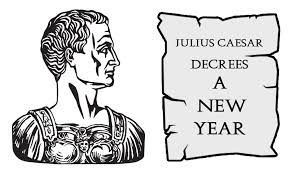A Not So New Year

November 14, 2016
The celebration of a new year has been around for nearly four thousand years. Mesopotamians began the new year with the vernal equinox during the middle of March, whereas the Egyptians, Phoenicians, and Persians went by the fall equinox. Even the Greeks had observed the marking of a new year using the winter solstice.
As ancient civilizations progressed and developed increasingly complex calendars, the start of a new year was typically chosen for a day that coincided with major astronomical or agricultural events. In Egypt, that major event was the annual flooding of the Nile River paired with the rising of the star Sirius. For China, it was the second new moon after the winter solstice.
The early Roman calendar originally only had ten months, with March 1st serving as the first day of every year. This is still reflected in the names of our months today, considering that September comes from the Latin septem meaning “seven”, octo meaning “eight”, novem meaning “nine”, and decem is “ten”. It was when the second king of Rome both January and February that the new year was moved from March to January 1st to commemorate the election of two new Roman consuls which is what the date we still use today, although many people of that time ignored the ruling and continued to see March as their reset day.
In 46 B.C, Julius Caesar created a new and greatly improved solar-based calendar that solidified January 1st as the year’s true beginning and was finally adhered to by all of Rome. This Julian character is very similar to the Gregorian calendar that most modern-day countries follow.
For a time in medieval Europe, Christian leaders were unhappy with all of the pagan celebrations that accompanied the day and changed the date multiple times to match those with biblical significance like December 25 (the anniversary of Jesus’s birth) and Easter. January 1st was restored in 1582 by the Pope in adoption of the Gregorian calendar.
New Year’s is a relatively new tradition when looking at the history of the world, and has evolved over time into the cheerful holiday we know today. Usually, New Year’s festivities begin the night of December 31st, called New Year’s Eve, and continue early into the next morning. Varying by culture, certain foods and snacks are often consumed to bring about good luck for the future. Setting off fireworks and singing songs are common customs to welcome the new year as well. Many also make resolutions, the practice of which is thought to come from the Babylonians and their promises to their gods to be moral in exchange for good crops and weather. In the United States, the dropping of the ball in Times Square of New York City at midnight is an iconic event that millions around the world tune in to watch. Some cities and towns across America mimic NYC’s tradition by organizing public drops of seemingly random objects that range from pickles (Dillsburg, Pennsylvania) to possums (Tallapoosa, Georgia) the night of New Year’s Eve.








